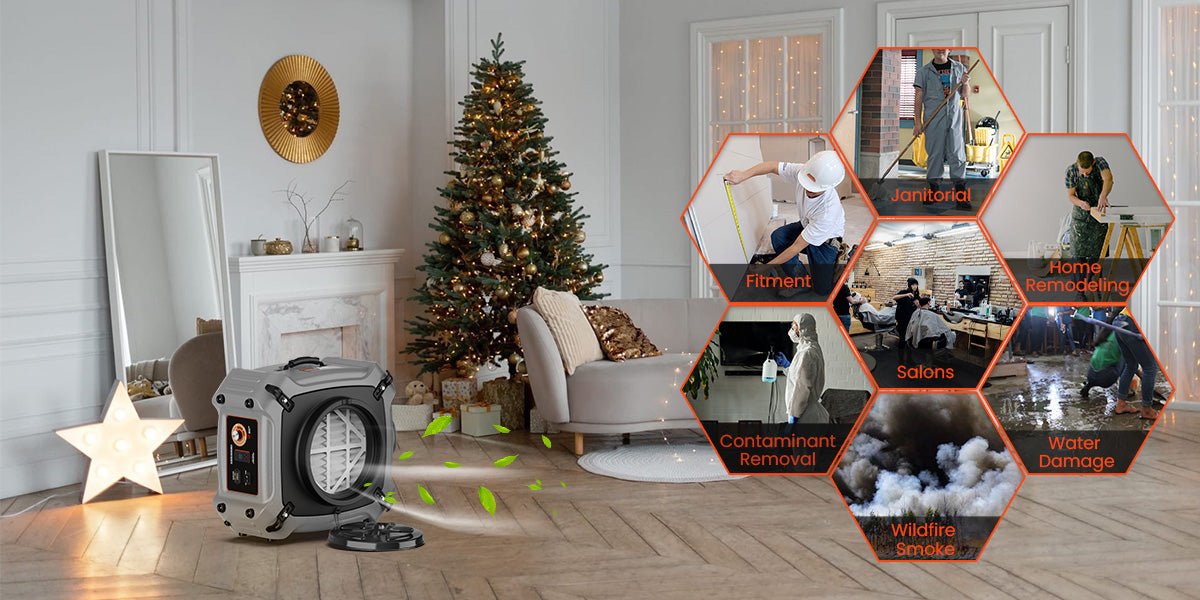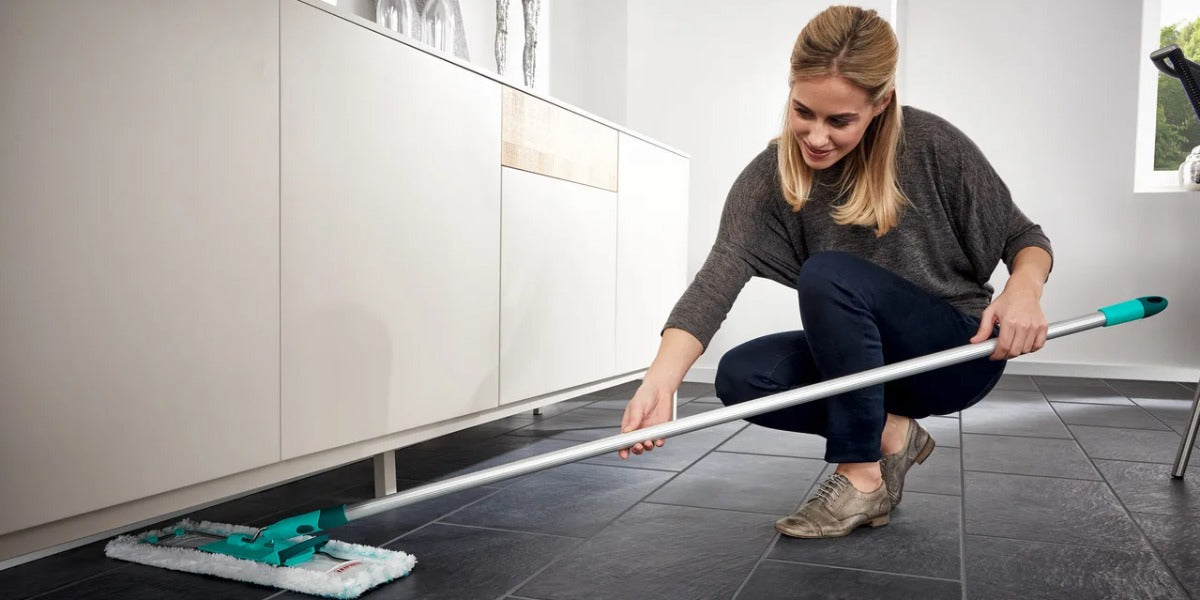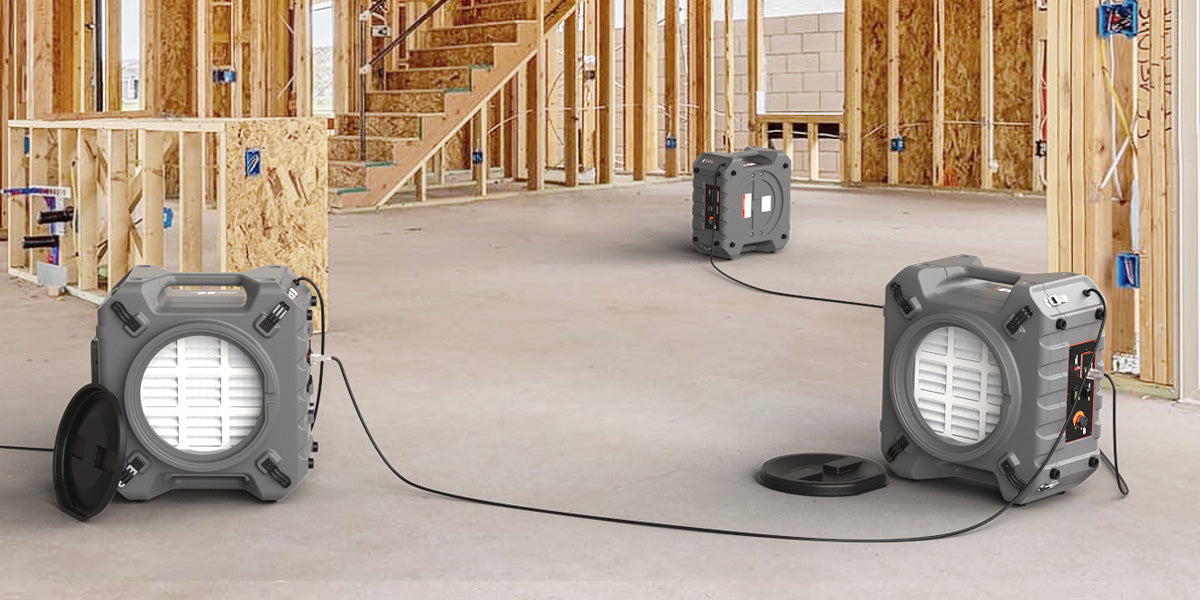If you’ve read through our previous blog on “what is a negative air machine?”, you must have been introduced to these powerful but compact devices widely used to provide high-quality air. Every workspace from medical facilities to construction sites, to homes can utilize these machines to eliminate contaminants in the air, odors, and virtually almost all indoor air quality issues.
Like in a healthcare facility, a negative air machine can be involved in preventing the spread of a highly contagious disease. It is often part of the isolation protocol for a sick hospital patient with an airborne disease automatically saving 1000s to millions of lives. It is also used in home projects like mold remediation where you don’t want the workers breathing in harmful substances like spores, dust, etc.
With such a wide application, it can be easy to compare it to the famed regular air purifiers. But the workings of a negative air machine differ which brings us to the question – “How does a negative air machine work?”.
It isn’t a rare question “how does a negative air machine work?” due to the variety of solutions out there. So to properly answer the question, we’ve taken it upon ourselves to reveal the inner workings of a negative air machine and how they provide your space with the clean air it deserves.
What is a Negative Air Machine?
A negative air machine, sometimes called a HEPA air scrubber, is a device designed to filter the air and create a controlled airflow to trap and remove contaminants. These machines are common in environments where air quality is critical, such as construction sites, hospitals, and mold remediation projects.
Put simply, a negative air machine pulls in contaminated air from a given space, filters it, and then exhausts the air out of the area. This ensures that the space remains at a lower pressure than the surrounding environment, preventing the spread of airborne particles. The primary purpose of these machines is to remove harmful particles, dust, bacteria, and viruses from the air, making it safer to breathe.
How Negative Air Machines Operate
Components of a Negative Air Machine
To understand how a negative air machine works, it’s important to know its key components:
Filters:
The filters in the negative air pressure machine are used for trapping tiny particles, including dust, mold spores, and pathogens. The multiple layers of filters otherwise called the 3-stage filtration system is used to catch particles that the previous filters might have missed.
The 3-stage filtration system is the same one applied in our hepa air scrubbers. This filter system– pre-filter (Merv-10), carbon filter, and the industry standard HEPA filters provides you the maximum benefits from a negative air pressure machine.
Here’s a quick breakdown of the filters
Pre-filter
Pre-filters normally have a MERV rating which stands for (minimum efficiency reporting value) of a value of at least 8 to go with the HEPA filter (high-efficiency particulate absorbing filter).
The MERV ratings were constituted by the ASHRAE (American Society of Heating, Refrigerating, and Air Conditioning Engineers). And it shows the extent to which a filter works to trap particles.
At a MERV rating of 10, our negative air pressure machines have a really reliable pre-filter most solutions don’t possess. The primary purpose of the pre-filter is to prevent particles from entering the primary HEPA filter which provides the HEPA filter with a longer life span and less maintenance.
Hepa-filter
The HEPA filters (high-efficiency particulate absorbing filter) are designed to capture 99.97% of particles as small as 0.3 microns, including bacteria, mold spores, and other allergens.
Activated Carbon Filter
The activated carbon filter is used to filter the air and remove miniscule particles. This air filter helps to remove gasses from the air by filtering them through a section of activated carbon which works to combat VOCs (Volatile Organic Compounds). The activated carbon filter works well for removing smokes and odors too which the other filters might have missed.
2. Fans
The fans are the components responsible for creating necessary airflow to pull air through the filter system. I.e. the filter system discussed above. The fans do this through the intake and exhaust processes which will be discussed in a section below.
3. Ductwork
The ductwork is an important part of the smooth operation of a negative air machine especially when dealing with containment issues. The primary function of the ductwork is to channel and export the filtered air out of the containment area.
The Air Flow Process behind the Negative air pressure machine
There are three main processes involved in the operation of the negative air machine. They include:
Air Intake
The process begins with the air intake. This is where the negative air machine actively draws in contaminated air from the surrounding environment. This intake is typically achieved through a series of openings or vents strategically placed on the machine. The power of the machine's fan or motor is crucial here as it creates a suction effect, pulling air into the system.
Filtration
Once the contaminated air is inside the machine, it encounters the 3-stage filtration system discussed earlier. The air passes through a series of filters, with HEPA (High-Efficiency Particulate Air) filters being the most critical component.
The pre-filters are employed to capture larger particles, reducing the load on the HEPA filter and extending its lifespan. It captures larger particles such as dust, hair, and debris, preventing them from clogging the more delicate filters downstream.
Then the air passes through the “heart of the filtration system” which is the HEPA filter. The HEPA filter is known for capturing 99.97% of airborne particles with a size of 0.3 microns or larger. These particles include viruses, bacteria, and allergens. The filter captures these particles as the air passes through the HEPA filter.
Finally, the carbon filters are used to eliminate any odors, gasses, and volatile organic compounds (VOCs) from the air. Activated carbon has a porous structure that effectively absorbs these substances from the air which leads to the next step.
Exhaust
After passing through the filtration stages, the now-clean air is exhausted out of the machine. This is where the concept of negative pressure comes into play. By continuously removing air from the containment area, the machine creates a lower pressure environment compared to the outside. This negative pressure prevents contaminated air from leaking out of the area and ensures that any new air entering the space is drawn into the machine for filtration.
And that seals the airflow process!! By continuously cycling air through this process, the machine ensures that contaminants are effectively removed from the environment.
Pro Tip: Regularly check and replace the filters in your negative air pressure machine to ensure optimal performance and air quality. Clean filters not only improve the machine's efficiency but also extend its lifespan.
WHY USE A NEGATIVE AIR PRESSURE MACHINE?
Benefits of Negative Air Machines
There are several benefits to why a negative air machine is worthy betting your health on. Here’s the bare minimum of them:
Elimination of Contaminants: These machines excel at removing harmful particles, allergens, and pollutants from the air, creating a healthier breathing environment.
Odor Control: By capturing and filtering odor-causing particles, negative air machines significantly improve indoor air quality.
Disease Prevention: They help prevent the spread of airborne diseases by capturing and containing harmful pathogens.
Allergy Relief: For individuals with allergies or respiratory sensitivities, negative air machines can provide much-needed relief by reducing allergen exposure.
Worker Protection: In industrial settings, these machines safeguard workers from exposure to hazardous substances and dust.
Mold Remediation: Negative air machines are crucial in mold remediation projects by preventing the spread of mold spores.
Construction Site Safety: They help maintain clean air quality during construction, protecting workers and the surrounding environment.
Healthcare Environment: In hospitals and clinics, negative air machines help create isolation rooms and prevent the spread of infections.
Conclusion
To crown it all, negative air machines aren’t just a piece of tech jargon but play an important role in your safety and health. They are used to remove harmful particles, bacteria, and viruses from the air, making it safer to breathe.
These machines work by pulling in air, filtering out contaminants, and then releasing the clean air back into the space or outside the building. The whole operation is anchored on a 3-stage filtration system that involves intake, filtration and exhaust.
With this straightword but brilliant system, negative air pressure machines or hepa air scrubbers
Help relieve allergies and allergy symptoms
Eliminate persistent odors like cooking smells, wet dog smells, etc
Prevent mold spread during mold remediation to protect workers and prevent regrowth…
And more and more benefits.
If you are interested in testing for yourself what a Negative Air Machine can do for your home or workplace, click here to check our store or contact Abestorm.com today.









Shop For Dehumidifier